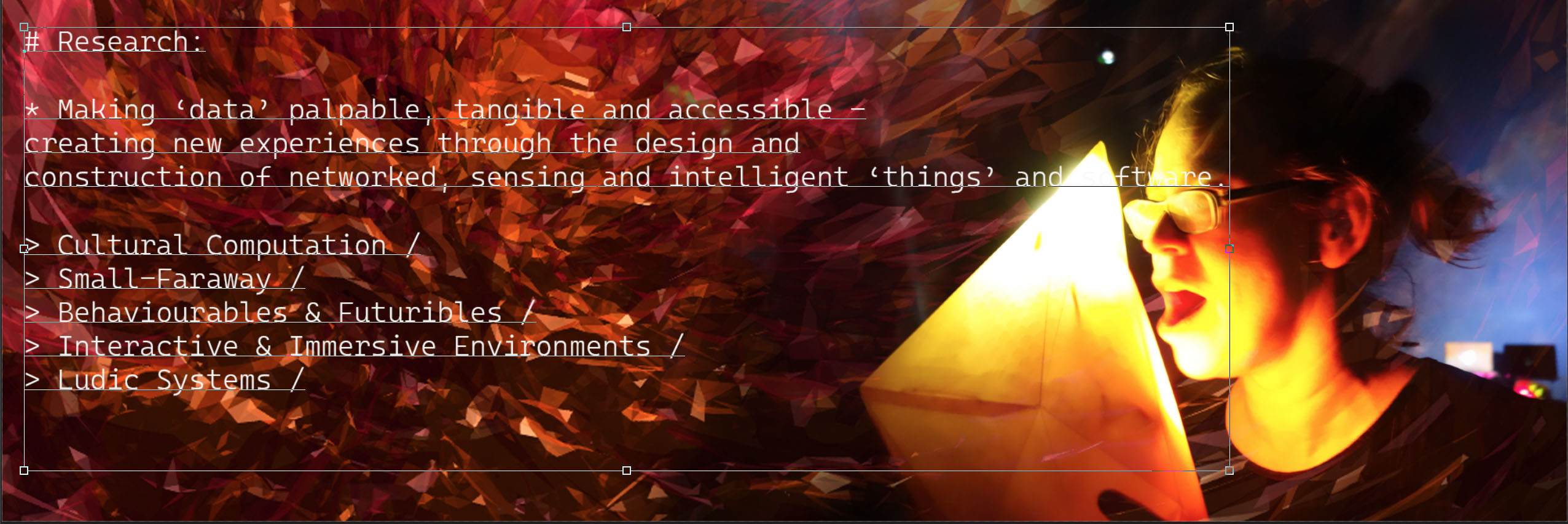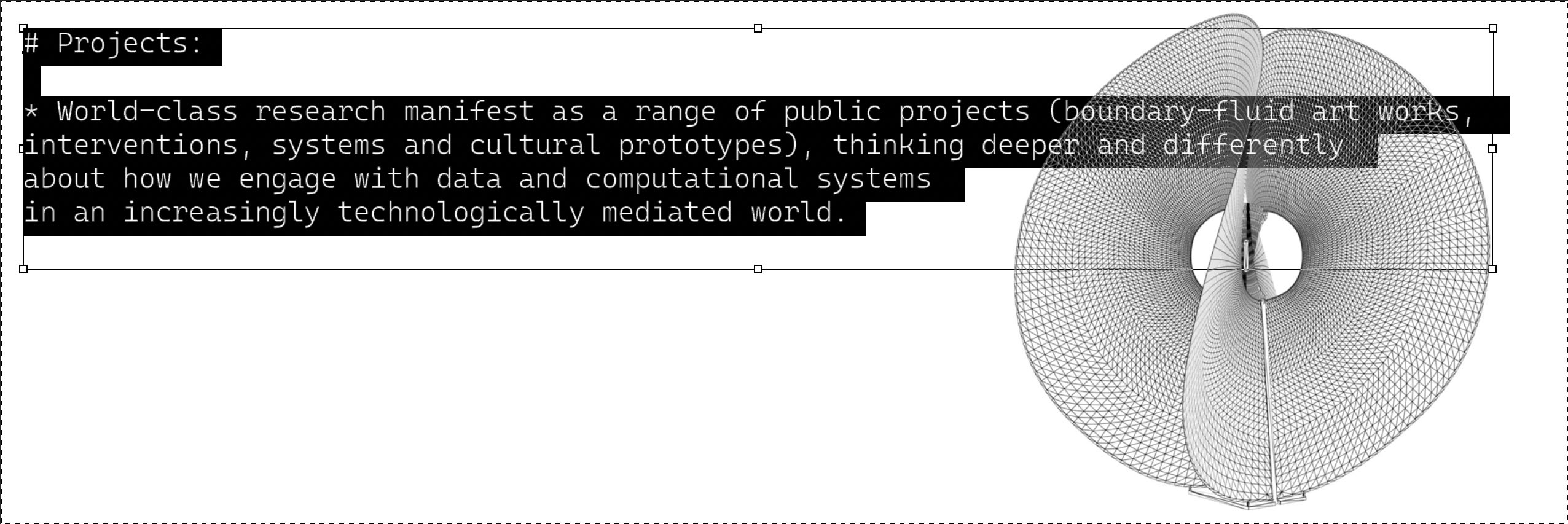The Material Image
1 – 3 November 2024
The 8th International Transdisciplinary Imaging Conference at the Intersections of Art, Science, and Culture.
The Material Image conference organisers acknowledge the Gadigal people of the Eora nation as the traditional custodians of the land on which we meet and work. We pay our respects to Elders past and present and extend this respect to all Aboriginal and Torres Strait Islander people. Sovereignty never ceded.
The Material Image
In recent years, the material turn has gained increasing prominence across diverse disciplines. Simultaneously, the advent of new imaging technologies has transformed our understanding of what it means to make, view, and interpret images, calling into question their ‘materiality’. The Material Image, the 8th International Transdisciplinary Imaging Conference at the Intersections of Art, Science, and Culture to be held at the National Art School from 1-3 November 2024, aims to actively engage with these developments by exploring the diverse materiality of images, particularly in relation to art. It seeks to understand how these images and practices reflect and influence societal values, communication dynamics, and the formation of collective ideas and identities in our visually saturated world.
Against this backdrop, new materialist theories have gained traction, emphasising the dynamic nature of matter and embracing aesthetics characterised by vibrancy, flux, and flow across vastly differing scales. These perspectives offered an optimistic view of the interconnectedness between humans and non-humans. However, in today’s global context, marked by a pandemic, military conflicts, the rise of neo-fascism, the rapid infiltration of AI into daily life, and the escalating climate crisis, it is timely to reassess various forms of materialisms and materialities. These challenges prompt a critical examination of theories such as new materialism and their implications in addressing current issues and shaping future images. This reassessment is centred on recognising the critical role of art and creative practices in deepening our understanding of materiality within image discourses.
Session 16: [MYTH]COMMUNICATION: ‘Crises of meaning in the age of the (im)material Image’ (panel)
4.15pm – 5.30pm Sunday 3 November 2024 – Timezone: AEDT (UTC/GMT +11 hours)
Session Chair: Chris Speed
Often seen as the primary output of our critical and creative endeavours, for architects, as with many creative disciplines, the image has long been understood as a communicating object. As, or perhaps even more, important than the spoken word, images, and in particular the syntactically codified communicative constructs that we so reductively referred to as ‘drawings’, form a paradoxically public, private language. A structure(al/ed) system for the articulation and manifestation of designerly intent for an audience both external and internal. Yet, like any other language, drawings are an imprecise tool of expression and translation, these imperfect vessels allow meaning to escape, creating ambiguity and uncertainty. This porosity, however, is not unidirectional; just as meaning leaks out, so too does it leak in. When in the introduction to his seminal text ‘The Architectural Uncanny’ English architectural historian and critic Anthony Vidler, conceptualises the irreconcilable dialectical tension(s) that underpin any (given) linguistic structure, as the ‘unheimlich’, he also alludes to the haunting presence and persistence of the implicit and inherent opposition, and the representational consequence of the phantoms of connotation and ghosts of etymological antecedents. As the post-literate age dawns and the nature and production of meaning shifts, these communicative spectres loom ever larger, yet there has been precious little disciplinary discussion of the inevitable implosion of meaning that will soon follow. Building on a recent publication (AD: Ghost Stories), this panel frames a set of ongoing conversations about the (disciplinary) implications of the emergence of this hauntology of the image.
Chris Speed.
The Story Exhaustion Generator and other ghost stories.
As Vallor reminds us, AI systems such as ChatGPT do not provide us with spontaneous machine intentions, instead they return us texts that are haunted by the injustices and discrimination embedded in our own data (Vallor 2023). These systems expose our own biases reanimated in software, revealing the inherent issues within the data they process. To explore these ghostly behaviours and the representational construction of language in AI tools, the Story Exhaustion Generator was developed with digital education specialist Javier Tejera. This tool forces the Open AI software ChatGPT to replace repeated words with synonyms, challenging deterministic outputs and highlighting language’s role in generating coherent statements. Large language models (LLMs) such as GPT-4, tokenize and embed words into high-dimensional vectors based on vast text data. Inspired by John Rupert Firth’s principle, “you shall know a word by the company it keeps” (1957), these models learn semantic meanings from the context of word usage. The models predict the next word in a sequence either randomly or through greedy decoding, illustrating their underlying determinism. This determinism bridges both Vallor’s analogy of haunted datasets, and the use of an Avery Gordon quote from her 1996 text ‘Ghostly Matters: Haunting and the Sociological Imagination’, for the Story Exhaustion Generator. As data-driven technologies increasingly shape the images and text that become us, they perpetuate historical assumptions about people, environments, and cultures, echoing Firth’s principle in the persistence of representational frameworks.
…
Chris Speed FRSE, FRSA is Professor of Design for Regenerative Futures at RMIT, Melbourne, Australia, where he collaborates with a wide variety of communities and partners to explore how design provides 49 methods to adapt toward becoming a regenerative society. Chris has an established track record in directing large complex institutions, grants and educational programmes with academic, industry and third sector partners, that apply design and data methods to social, environmental and economic challenges.
Mike Phillips. Online. UK.
Ectoplasm in the fulldome – Infinity and beyond.
The Fulldome oozes with ectoplasm – chromatic aberrations and fleeting ghostly glitches in the viewer’s peripheral vision, flicker around the immersive spherical perspective of the architecture previously known as the Planetarium. Now more of an omniarium providing sensory experiences through a transdisciplinary tool for displaying both material and imaginary worlds. This shared virtual reality environment allows audiences to travel from the edge of the observable universe through interactive data-scapes to microscopic and nano-scale landscapes. This transcaler transition, from the smallest to the largest things possible, is increasingly being enabled by Artificial Intelligence that can process huge amounts of raw data to visualise the universe for us – looking up and down, and possibly sideways. The development of algorithmic entities within the immersive environment of the Fulldome architecture are contaminated with its mythological, theological, astronomical, and astrological origins. The modern planetarium’s emergence coincided with the discovery of the Hertzian dimension, characterized by radio waves and magnetic forces, which initially promised communication with the dead. Current telecommunications technologies, born from these paranormal aspirations, now facilitate interactions with algorithmic entities that understand our collective deepest yearnings. This presentation focuses on media archaeological efforts by the author to virtually recreate paranormal instruments within the Fulldome to create interactive experiences with algorithms, termed “algorythms.” This work draws on the paranormal theories of the astronomer Dr Percy Seymore and the work of Professor Gustav Adolf Schwaiger, who, in the 1930s, constructed Hertzian instruments to explore ectoplasm from the infamous Austrian medium Rudi Schneider. Interactions with these virtual instruments suggest that ghosts persistently seek to communicate with us, historically through psychoactive substances, rituals, talismans, and Hertzian devices, and now through artificial intelligence fuelled by our data and desires.
…
Mike Phillips is Professor of Interdisciplinary Arts at the University of Plymouth, and the Director of Research at i-DAT.org. His R&D orbits a portfolio of projects that explore the ubiquity of data ‘harvested’ from an instrumentalised world and its potential as a material for revealing things that lie outside our normal frames of reference – things so far away, so close, so massive, so small and so ad infinitum. He manages the Fulldome Immersive Vision Theatre (www.i-dat.org/ivt/), a transdisciplinary instrument for manifesting (im)material and imaginary worlds and is a founding Partner of FullDome UK.
Leigh-Anne Hepburn.
All that remains: Participatory placemaking and ghosts of the past.
Participatory design seeks to enact and enable a person’s civic right to be involved in the design of objects, services, systems, and experiences near to them. As a design practice, it engages with the intersectional epistemologies that advantage and disadvantage, empower and disempower, construct and deconstruct the lives of people within civic society, seeking to assemble a configuration of individuals bound by common matters of interest or concern. In this way, design in public spaces may be reimagined as participatory placemaking, a prompt or provocation that can invoke a demonstration of public engagement and agency, akin to what Chantal Mouffe refers to as agonistic pluralism. It’s important to note too that participatory making of public space rarely starts from tabula rasa. It builds upon the historical, cultural, relational, and material; the remains of embodied forces that surface in stories shared, lives recounted, and in images, apparitions and physical reminders. However, as we shift towards reconceptualising new public spaces digitally, enabled by technologies such as virtual reality, we must also consider the potential for loss. Where does this leave the ghosts of public spaces past, and the material remains of place-based histories? This presentation explores a role for participatory design in enabling the continued haunting of place.
…
Leigh-Anne Hepburn is associate professor and head of design in the Sydney School of Architecture, Design and Planning at The University of Sydney. Her work utilises co-design and participatory design approaches at the intersections of industry, academia and community, informing new models of 50 transdisciplinary collaboration across communities, organisations, health, and government. Most recently, Leigh-Anne has been exploring spaces of mental health at the intersection of design, architecture and urbanism.
Peter J Baldwin. Online. UK.
Ethereal Encounters: (Im)material Images.
Beguiling and beautiful, confusing, confounding, and seductive, the socio-cultural melange, the tangled tapestry of pluralistic presents, future fragments, and historic hauntings that we so reductively refer to as the city, has long held a privileged position within the artistic and architectural imagination. Owing to its inherent complexity the city defies traditional representational practices, and forms of knowing, documenting, and understanding. Whilst plans may document the general arrangement of streets, blocks or zonings, the orthogonal occupation of a (horizontal) surface, they do little to address the histories, temporalities, and politics of a space, similarly montages and sketches may capture a moment, but offer little in the way of an explanation of the histo-topographic drivers for these events. In his essay, the ‘Soluble City’, British artist and art historian Roger Cardinal attempts to negotiate this inherent ambiguity, viewing the city through a hexadic matrix of intersecting metaphysical metaphors. Yet even the complex ontological conjunctions of the ‘sixfold’ city of Cardinal’s conjecture is an insufficient tool, reliant on imparted abstract(ed) knowledge and conceptualisation rather than a more intimate experiential knowledge that might be garnered through a more sensuous form of understanding. Seeking, this, (forbidden) knowledge, my ongoing experimental design project Filigreed Gods – Diaphanous Bodies and Sacred Vessels (2019 -) attempts to explore these ambiguous territories through the introduction of a set of practices and processes that allow for the free association of fragments, the emergence of (un)intentional choreographies and the forfeiture of absolute compositional control.
…
Peter James Baldwin is an Architect, artist and educator known for his experimental drawings and critical commentary on contemporary representational practices. Currently based at Loughborough University, Peter has taught and lectured at schools of architecture across the UK and internationally. Peter was invited to exhibit at the Yale School of Architecture “In Memoriam” Exhibition (2019), his research has been published in, DRAWING: Research Theory, Practice (Intellect Books 2022) and AD “A Sublime Synthesis: Architecture and Art” (Wiley September 2023). Peter recently Guest Edited AD “Ghost Stories: Architecture and the Intangible” (Wiley July 2024).






You must be logged in to post a comment.